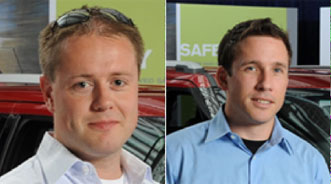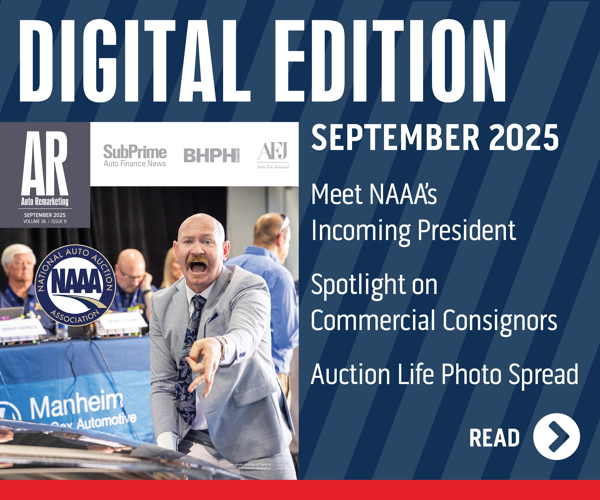Ford Developers Look to Google Prediction API to Optimize Vehicle Efficiency

Ford researchers recently explained how they are harnessing the power of cloud computing, analytics and Google innovation to identify technologies that could make tomorrow’s vehicles smart enough to independently change how they perform to deliver optimal driveability and fuel efficiency.
The automaker’s top thinkers said they are applying Google’s Prediction API to more than two years of their own predictive driver behavior research and analysis. The Google API can convert information such as historical driving data — where a driver has traveled and at what time of day, for example — into useful real-time predictions, such as where a driver is headed at the time of departure.
“The Google Prediction API allows us to utilize information that an individual driver creates over time and make that information actionable,” stated Ryan McGee, a technical expert on vehicle controls architecture and algorithm design at Ford Research and Innovation.
“Between Google Prediction and our own research, we are discovering ways to make information work for the driver and help deliver optimal vehicle performance,” McGee declared.
How This Technology Is Meant to Work
Ford is hoping to use these types of cloud-stored data to enable a vehicle essentially to optimize itself and perform in the best manner determined by a predicted route.
This week, Ford researchers are presenting a conceptual case of how the Google Prediction API could alter the performance of a plug-in hybrid electric vehicle at the 2011 Google I/O developer conference.
In this theoretical situation, here’s how the technology could work:
—After a vehicle owner opts in to use the service, an encrypted driver data usage profile is built based on routes and time of travel. “In essence, the system learns key information about how the driver is using the vehicle,” researchers said.
—Upon starting the vehicle, Google Prediction will use historical driving behavior to evaluate the current time of day and location to develop a prediction of the most likely destination and how to optimize driving performance to and from that location.
—An on-board computer might say, “Good morning, are you going to work?” If the driver is in fact going to work, the response would be, “Yes,” and then an optimized powertrain control strategy would be created for the trip. A predicted route of travel could include an area restricted to electric-only driving. Therefore, Ford thinks the plug-in hybrid unit could program itself to optimize energy usage over the total distance of the route in order to preserve enough battery power to switch to all-electric mode when traveling within the EV-only zone
“Once the destination is confirmed, the vehicle would have instant access to a variety of real-time information so it can optimize its performance, even against factors that the driver may not be aware of, such as an EV-only zone,” McGee pointed out.
Because of the large amount of computing power necessary to make the predictions and optimizations, Ford indicated an off-board system that connects through the cloud is currently necessary.
What’s Ahead for This Technology
Knowing that driver behavior and patterns correlate to overall fuel and energy efficiency during the vehicle ownership experience, Ford researchers insist they are committed to increasing their understanding of driver behavior behind the wheel and to developing accurate protocols to predict it.
“Anticipating the driver’s destination is just one way that Ford is investigating predicting driver behavior,” McGee emphasized.
“This information can ultimately be used to optimize vehicle performance attributes such as fuel efficiency and driveability,” he added.
The OEM also contends the Google Prediction API is one example of a technology that is helping Ford “open doors to new predictive possibilities powered by the cloud.”
Johannes Kristinsson, a system architect with vehicle controls architecture and algorithm design at Ford Research and Innovation, stressed, “Ford already offers cloud-based services through Ford SYNC, but those services thus far have been used for infotainment, navigation and real-time traffic purposes to empower the driver.
“This technology has the potential to empower our vehicles to anticipate the driver’s needs,” Kristinsson added.
Ford thinks helping drivers comply with regulations could be among those needs.
For example, the automaker mentioned the French government is considering creating zones that would mandate vehicles have lower emissions. The manufacturer pointed out cities such as London, Berlin, and Stockholm already have such zones.
If a vehicle were able to predict exactly when it might be entering such a zone, Ford believes the unit could optimize itself in a way to comply with regulations, such as switching the engine to all-electric mode.
The automaker said work is now underway to study the feasibility of incorporating other variables such as driver style and habits into the optimization process, so Ford can further optimize vehicle control systems, allowing car and driver to work together to maximize energy efficiency.
Researchers think what is integral to this next-step work is personal information security, an issue Ford insists is of the utmost importance.
“We realize that the nature of this research includes the use of personal data and location awareness, something we are committed to protecting for our customers in everything we do,” Kristinsson acknowledged.
“A key component of this project is looking at how to develop secure personal profiles that will ensure appropriate levels of protection and specific data use only by the driver and the vehicle to deliver the best driving experience,” he continued.
“It’s about pure customer benefit and creating individualized and optimized experiences — the right one for each person, vehicle and situation,” Kristinsson concluded.


